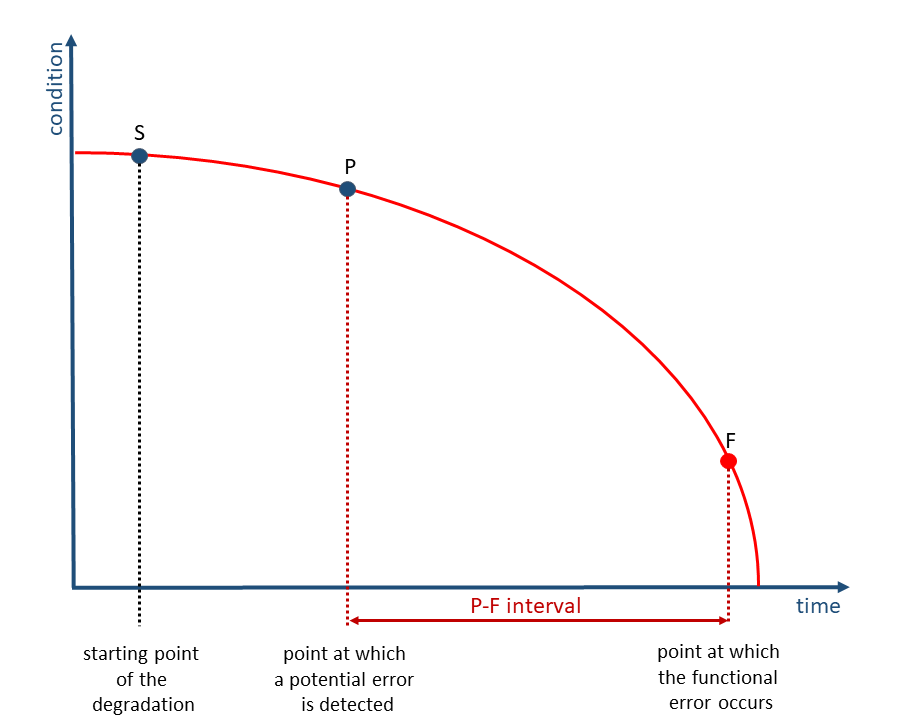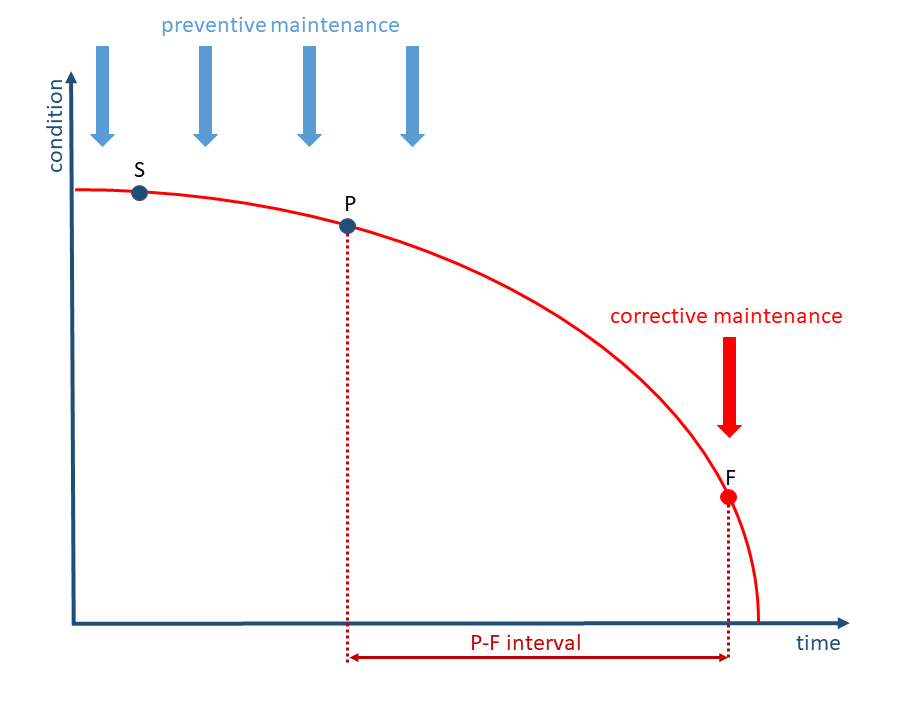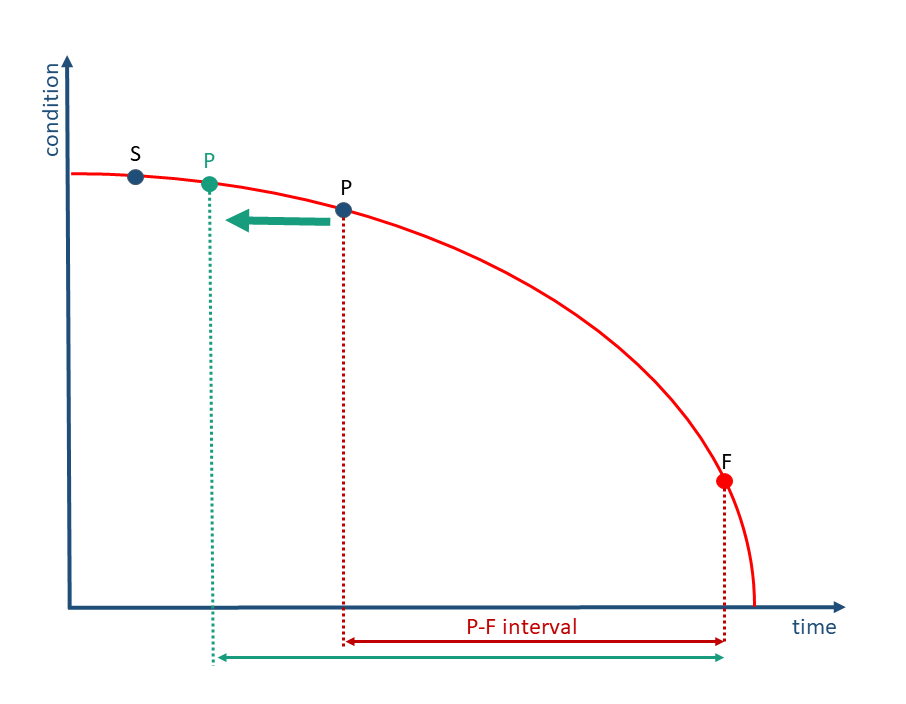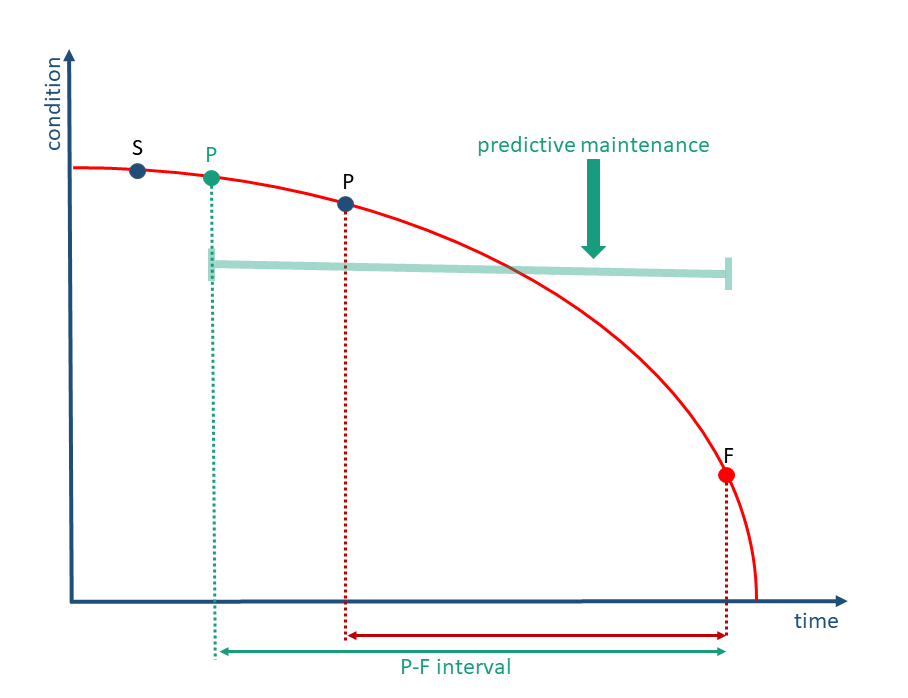The P-F interval
The changes in the condition of a plant component are determined with the help of long-term analyses, whereby starting from an optimal condition, this deteriorates over time. In the schematic representation of the condition development over time, the following points are to be emphasized: the point (S) at which the fault or the condition deterioration begins, the point (P) at which the fault can be recognized and the point (F) at which the fault occurs.



